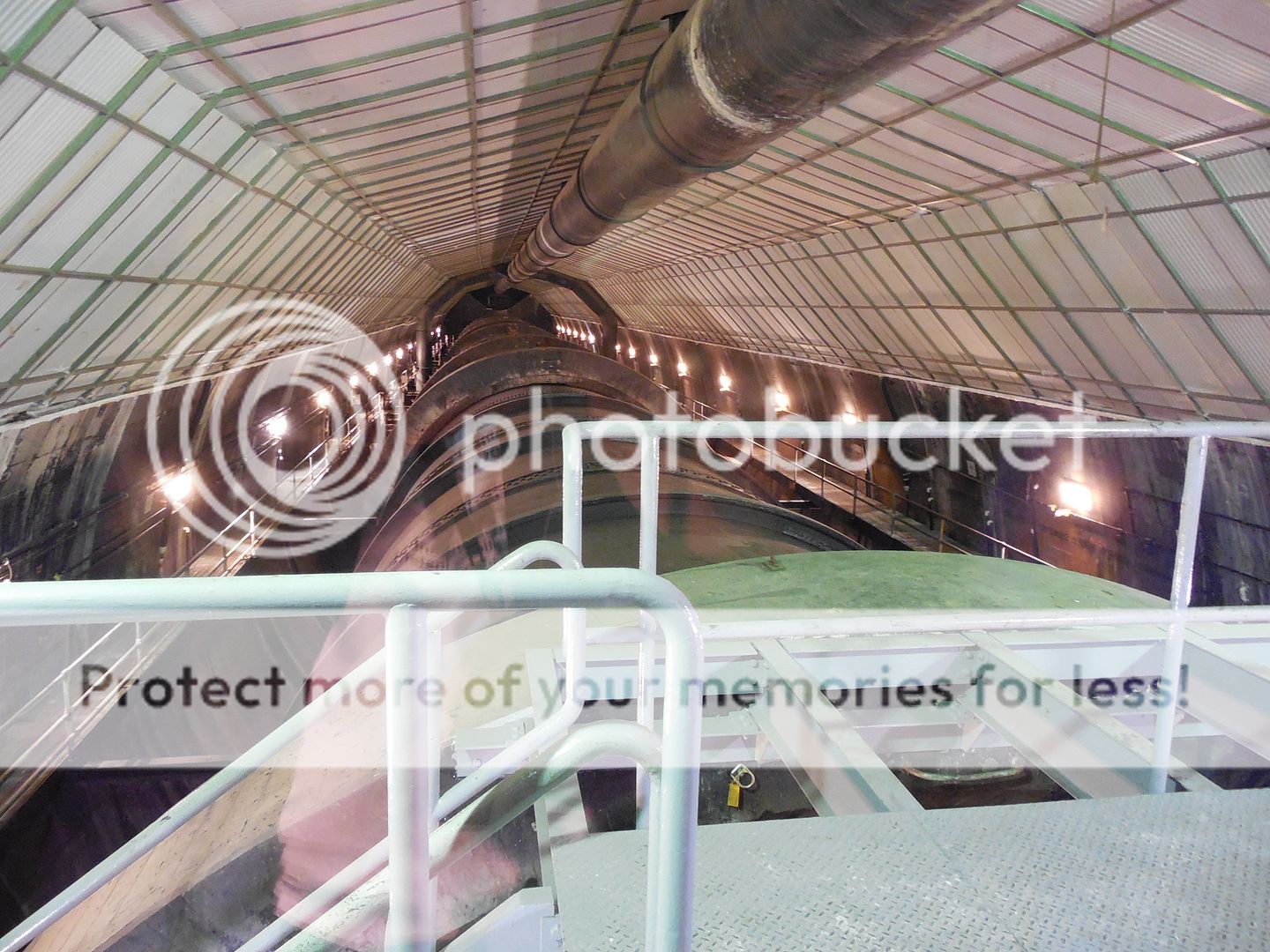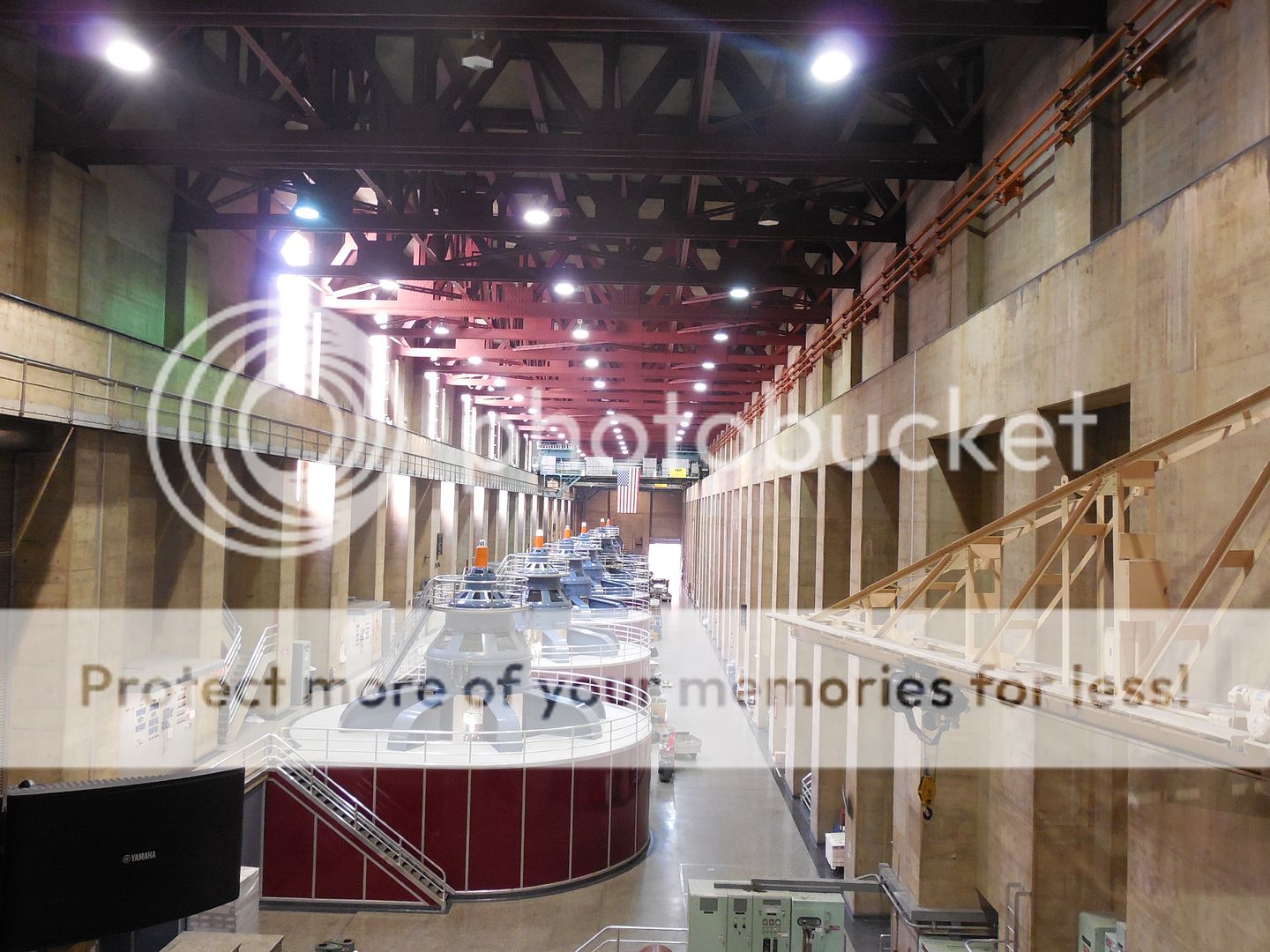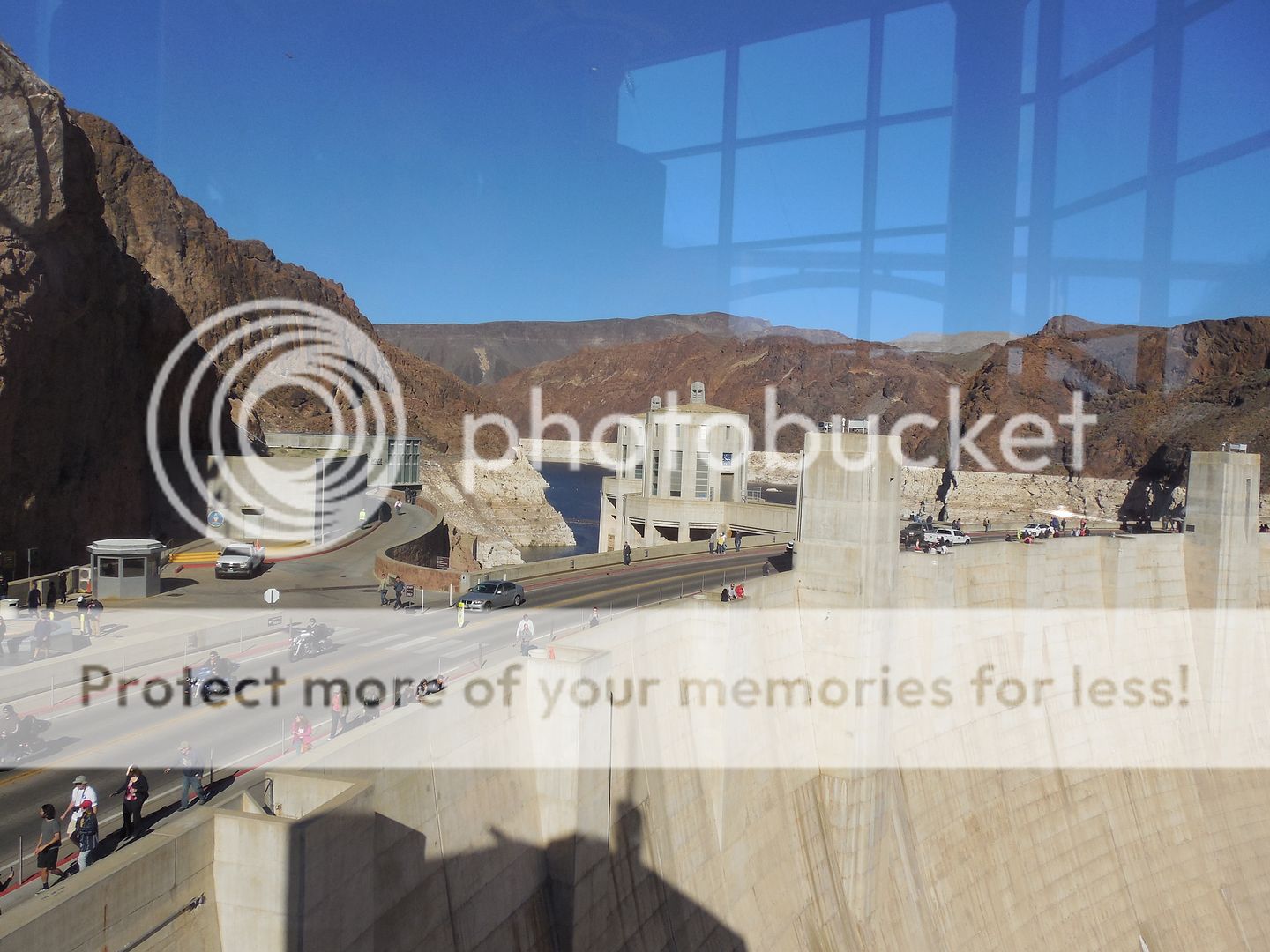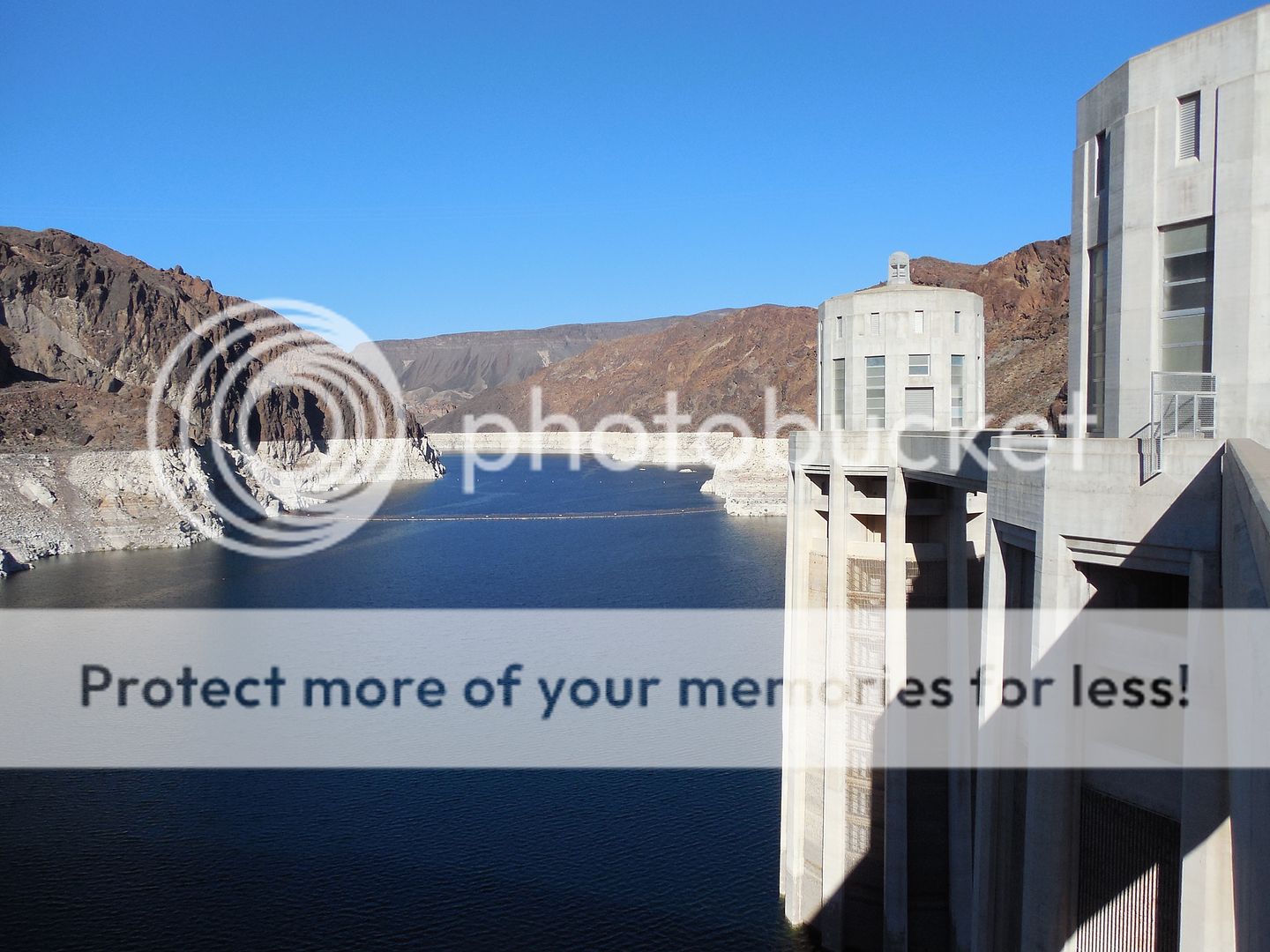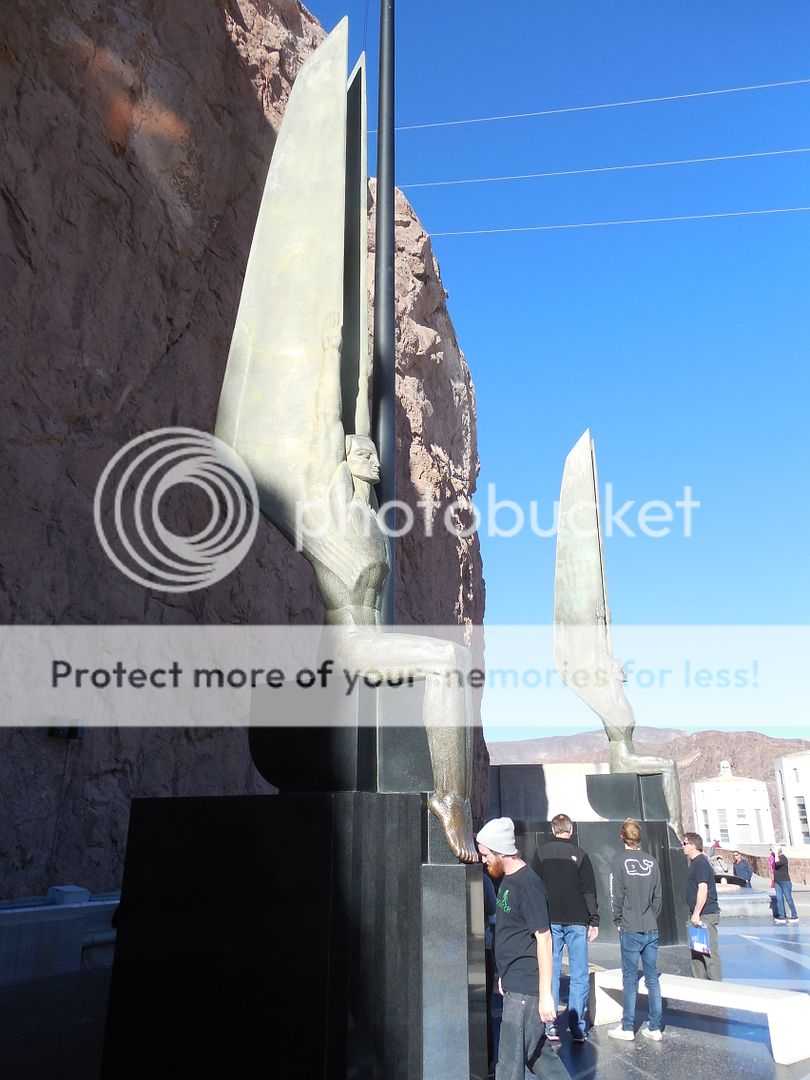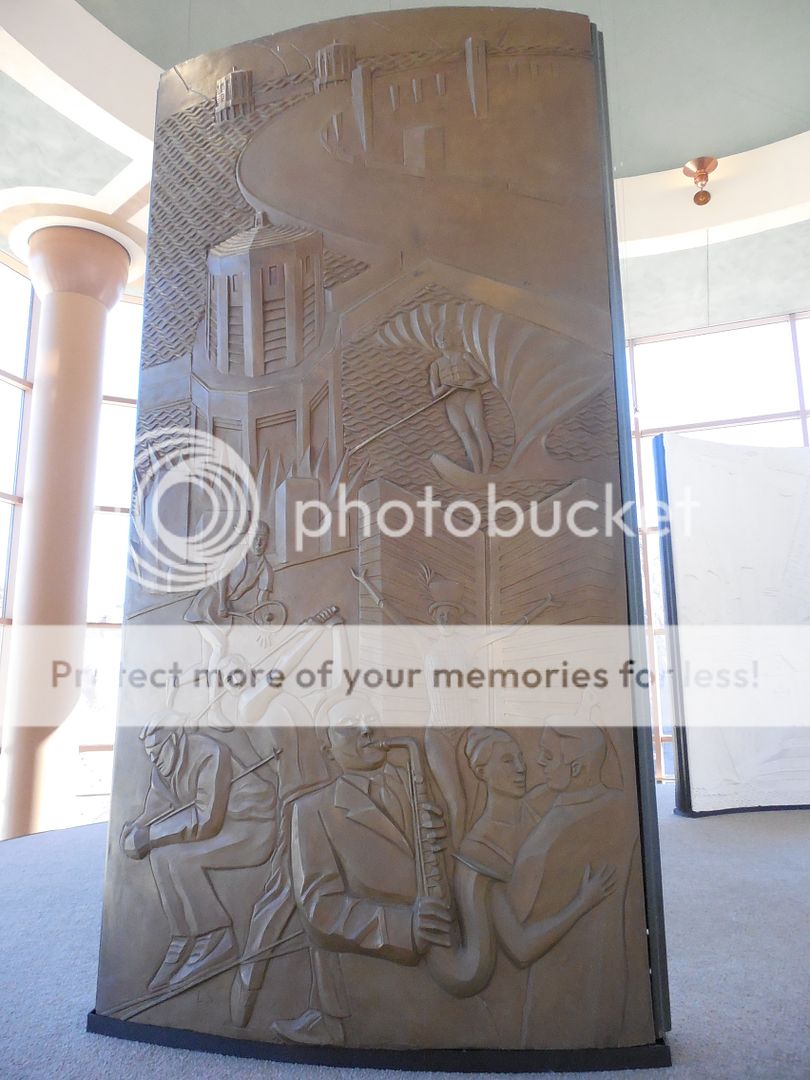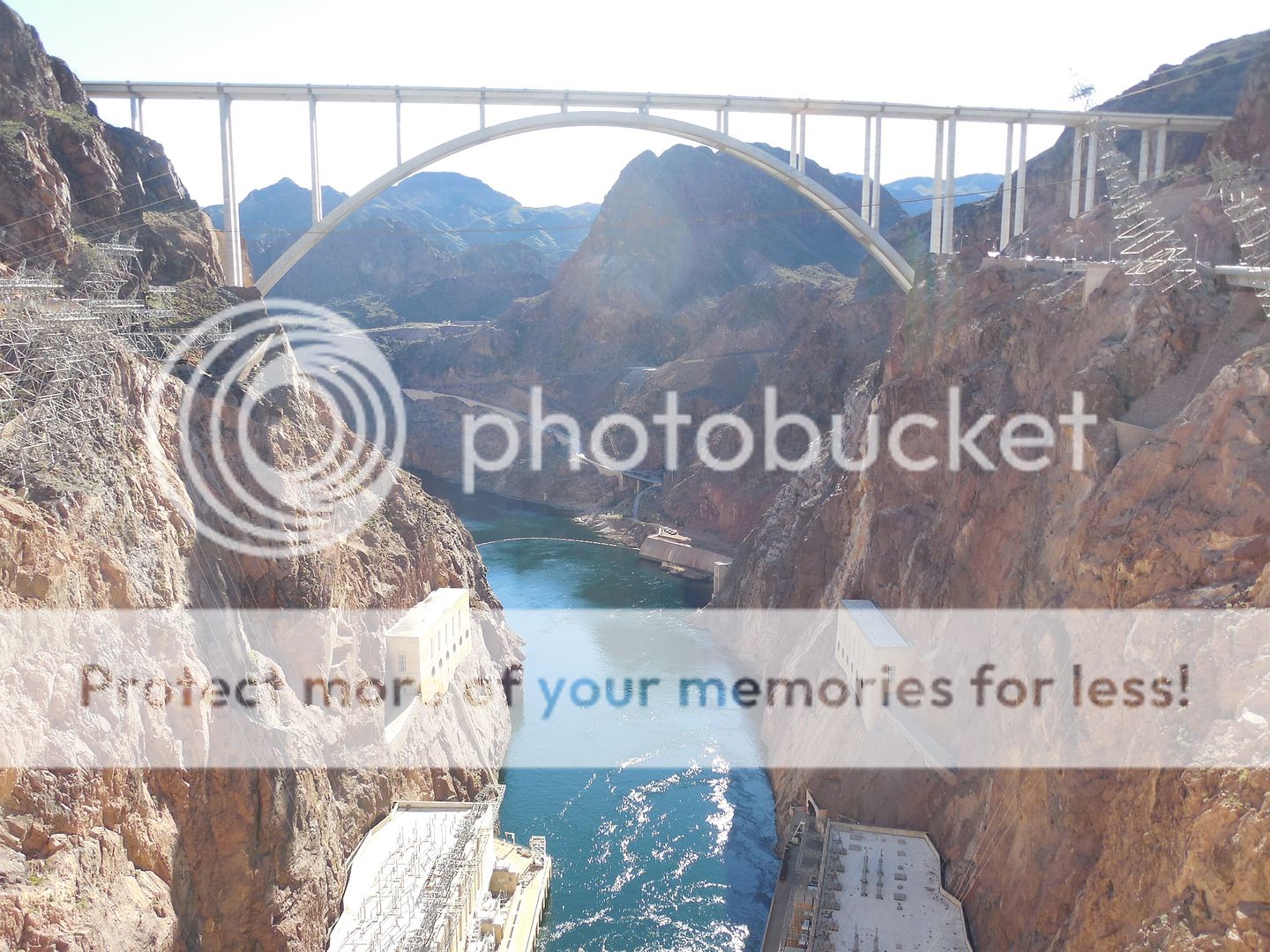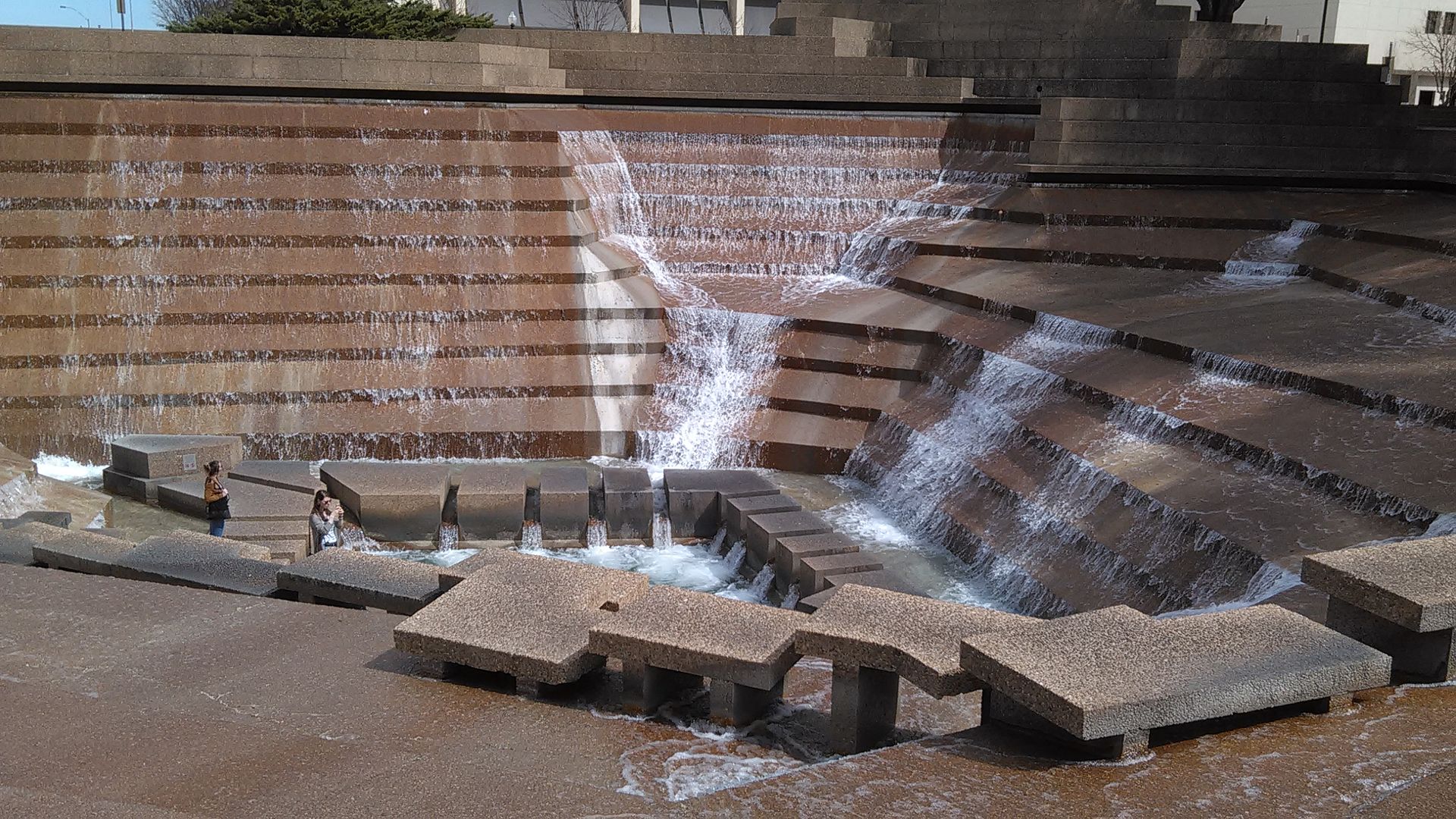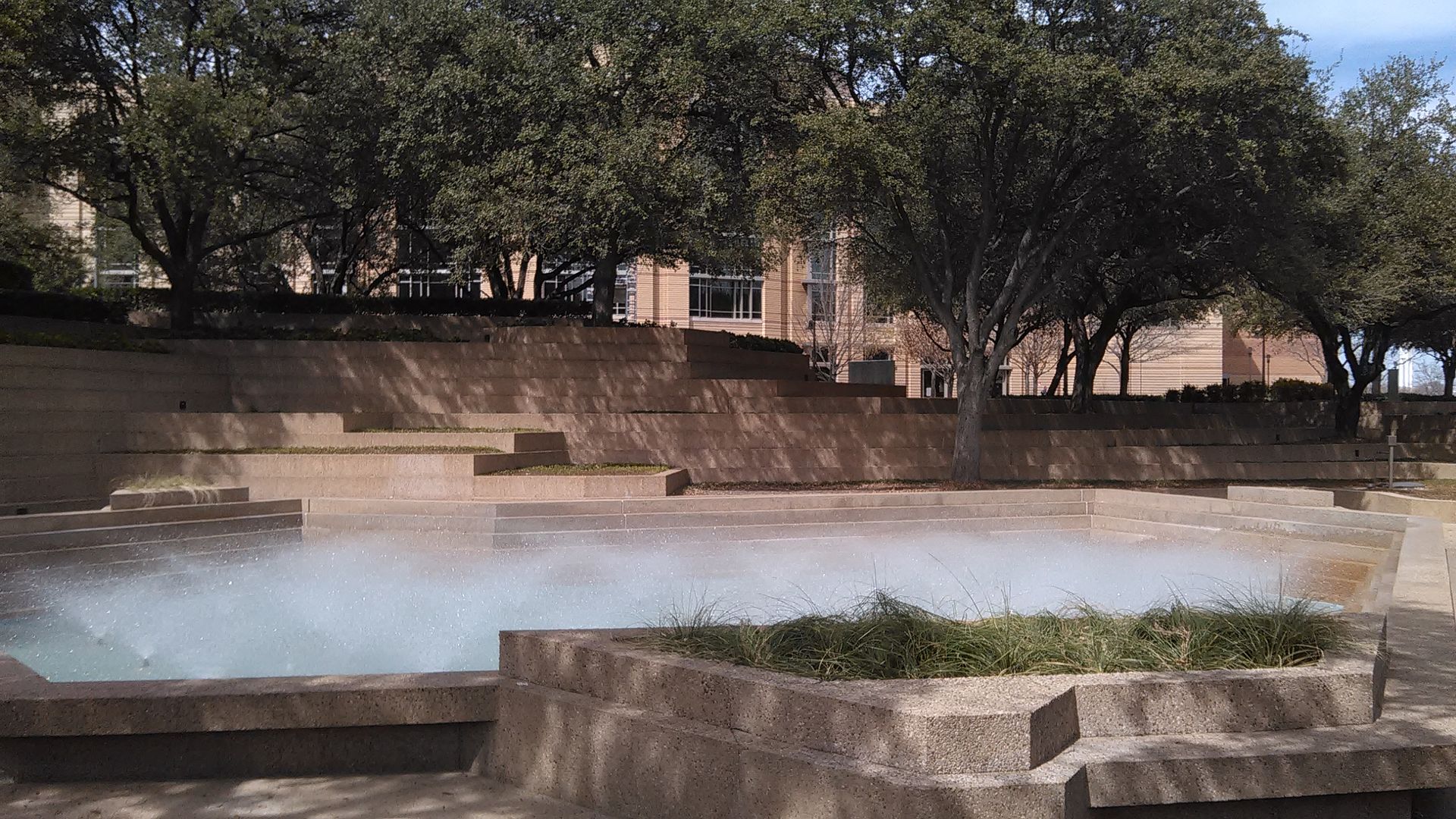Clearly, travelling in style is the answer.
The dam is a monumental piece of civil engineering. It was planned because the periodic floods of the Colorado river wreaked havoc on the countryside downstream, and because the water that was wasted during floods was desperately needed for irrigation in the dry seasons. It was constructed in the middle of the Great Depression and built in only 5 years. Thousands of the unemployeed flocked to take jobs created by the dam.
The first thing they had to do, was divert the river- which they did by drilling long tunnels through the rock canyon walls. They the built cofferdams around the section of the canyon where the dam was to be built, and pumped all the water out. Then they had to excavate all the sand and silt from the river bottom until they hit bedrock. The canyon walls had to bear the force of the water pressing against the dam, so they had to remove all the weathered rock on the surface until they reached denser unweathered rock behind it.
It was poured in sections- each one had pipes embedded to cool the concrete. Had they done it in a single pour they estimated it would have taken the concrete 125 years to cool, and internal stresses would have caused it to crumble in the process. You can see the marks of the sections on the surface of the dam today.
It took longer to fill the lake behind the dam than it did to build. It was too big a project for any single company- a consortia of six companies was formed to bid on the job. They built a town, Boulder City, to house the workers for the job. It took enough concrete to pave a sidewalk on the equator around the entire world- or pave a two-lane highway from San Francisco to New York.
And here are the turbines themselves. The entire flow of the Colorado river passes through the turbines. The dam supplies electricity to Nevada, Arizona and parts of California.
Here are the intake towers.
We thought the little hatlike protrusions on the tops of the towers looked like grumpy little faces.
What we could see of the lake from the top of the dam was spectacular.
One of the charming parts of the project is that it was built at a time when grand projects were supposed to look grand instead of solely functional. So there are marvelous little art deco flourishes all through the area. These winged figures sit on a plaza inlaid with astronomical charts intended to convey the date of construction to future archeologists.
And this is one of a series of bronze reliefs, representing the various groups who benefitted from the construction- in this case the cities downstream.
After seeing the dam, we climbed up to the old rail line (now a rail trail) and saw the power station, feeding the power from the dam to the grid-
-and took a last look at the Colorado downstream- a river tamed and harnessed by the will of man.
And then it was off to Utah, and a long drive through the mountains as the sun set, on our way to Zion.
The slideshow:



